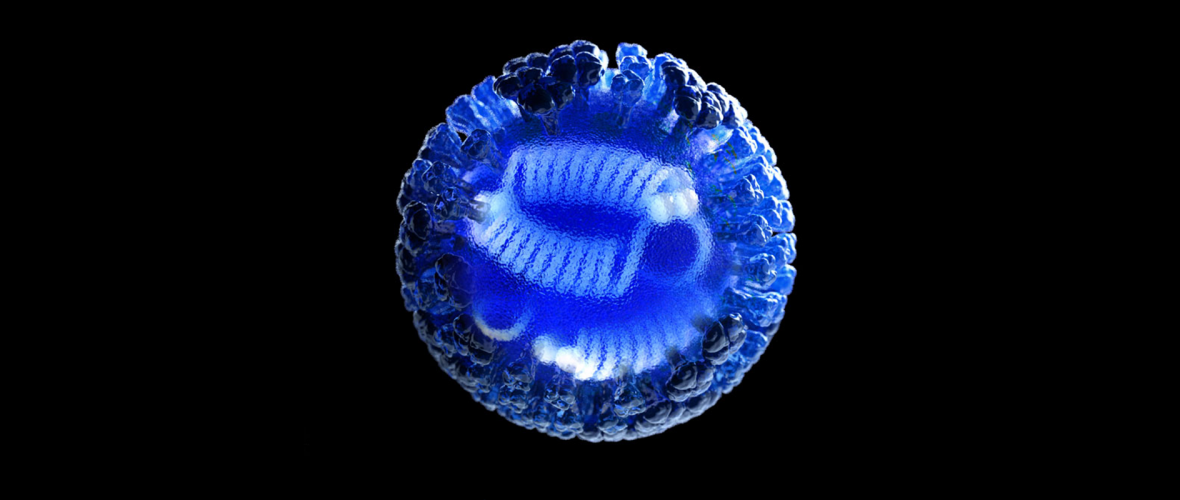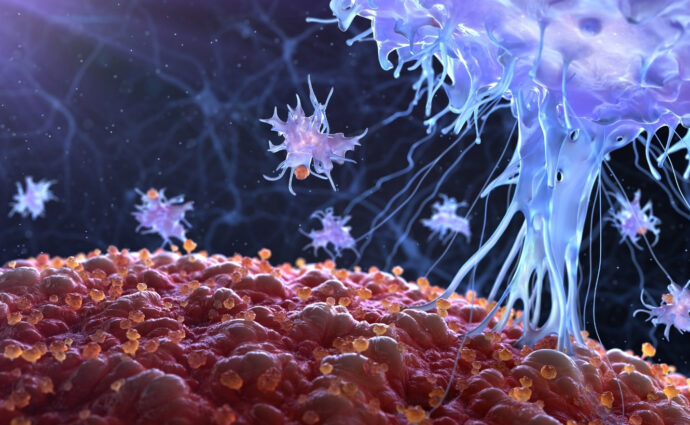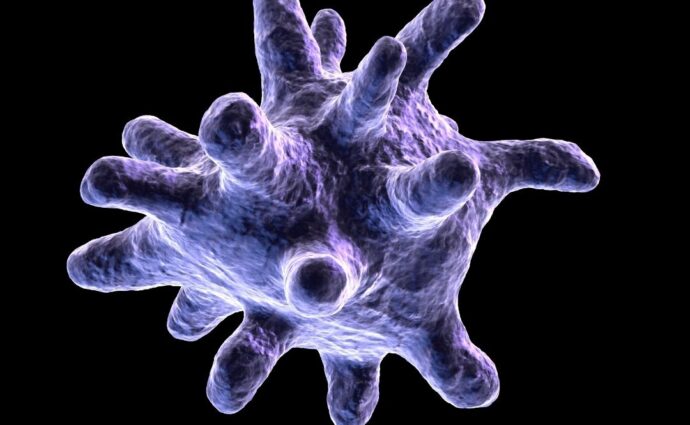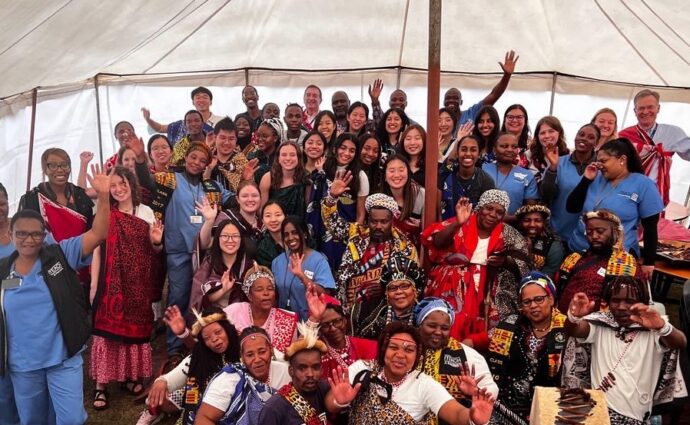Date: October 21, 2019 By:

Scientists from the Ragon Institute of Mass General, MIT, and Harvard, led by Dr. Aaron Schmidt, Assistant Professor of Microbiology, have partnered with the Duke Human Vaccine Institute (DHVI) on a nation-wide, multidisciplinary program to develop a more universally protective influenza vaccine.
The Collaborative Influenza Vaccine Innovation Centers (CIVICs) program, driven and supported by the National Institute of Allergy and Infectious Diseases (NIAID), part of the National Institutes of Health (NIH), is a new network of research centers that will work together in a coordinated, multidisciplinary effort to develop more durable, broadly protective and longer-lasting influenza vaccines. NIAID will support the CIVICs program over seven years on vaccine research and development via options pending future funding.
The network will develop so-called “universal” influenza vaccines, which could provide longer-lasting protection than current vaccines and against a wider variety of influenza virus strains. The research is aimed at the development of vaccine candidates through testing in preclinical studies, clinical trials and controlled human challenge studies.
DHVI is one of three academic centers awarded the CIVICs vaccine development contracts. The contract, led by M. Anthony Moody, M.D., Associate Professor in the Department of Pediatrics at Duke School of Medicine, will conduct basic immunology and virology research to identify potential vaccine candidates. Dr. Moody said some of this work has already been done, and candidates are already in contention including some developed in Dr. Schmidt’s laboratory. For this portion of the project, the Duke contract encompasses collaborative work through subawards with Boston Children’s Hospital, the Ragon Institute of Mass General, MIT, and Harvard, the University of Pennsylvania and the University of Texas.
“A big part of the vaccine center is really focused on basic immunology. We will be asking fundamental questions about what we want, how to measure success, and then how to achieve it. This initiative brings together a great group of scientists in the field who have a lot of ideas. We’ll test those ideas and really let the science drive it and figure out which ones are best,” Dr. Moody said in a statement.
The Vaccine Centers will focus on designing novel vaccine candidates and delivery platforms with an emphasis on cross-protective vaccine strategies that could be used in healthy adults as well as populations at high risk for the most serious outcomes of influenza, such as children, older adults, pregnant women, and people with health problems resulting in immunodeficiency. They will also focus on new ways to study the influenza virus and the human immune response to the virus through computer modeling, animal models and human challenge trials.
Spearheading immunogen design efforts is Aaron Schmidt, Ph.D., of Harvard Medical School and the Ragon Institute of Mass General, MIT, and Harvard. Dr. Schmidt’s lab studies the adaptative immune responses to influenza virus primarily using structural biology and protein engineering approaches.
“By understanding on a structural level how the host ‘sees’ and subsequently targets viral proteins, in particular the influenza virus hemagglutinin, we hope to leverage this information to rationally design immunogens that can elicit broadly protective responses and produce a ‘universal’ influenza vaccine,” says Dr. Schmidt.
The broad range of collaborators, experts and multidisciplinary institutions places the DHVI-led Vaccine Center at the vanguard of vaccine research and development.
The Ragon Institute of Mass General, MIT, and Harvard was established in 2009 with a gift from the Phillip T. and Susan M. Ragon Foundation, with a collaborative scientific mission among these institutions to harness the immune system to combat and cure human diseases, and translating knowledge of human immunology to promote the rational design of vaccines and immunotherapies. A primary focus of the institute has been to contribute to the development of an effective AIDS vaccine. Today, the Ragon Institute draws scientists and engineers from diverse backgrounds and areas of expertise, engaged in innovative and goal‐oriented research in clinical, translational, and basic science across the Harvard and MIT communities and throughout the world to apply the full arsenal of scientific knowledge to understanding mechanisms of immune control and immune failure and to benefit patients.
This project has been funded by the National Institute of Allergy and Infectious Diseases, National Institutes of Health, Department of Health and Human Services, under Contract 75N93019C00050.
For more information on the CIVICs awards please visit: https://www.nih.gov/news-events/news-releases/nih-forms-new-collaborative-influenza-vaccine-research-network.
For more information on Dr. Aaron Schmidt’s lab please visit: https://schmidtlab.med.harvard.edu/.
This article appears on the Ragon Institute website with the permission of the author.
Image description: 3D computer-generated rendering of a whole influenza (flu) virus in semi-transparent blue with a black background. A transparent area in the center of the image allows the viewer to see inside of the influenza virus to see its ribonucleoproteins (RNPs). The RNPS are shown in white with their coiled structures and three-bulbed polymerase complex on the ends. An influenza virus’ RNP is composed of both RNA and protein. Every influenza virus has eight RNP segments that correspond to the virus’ eight total gene segments. Three of these RNP segments encode the virus’ surface proteins (i.e., the HA, NA and M proteins). The virus’ hemagglutinin (HA) and neuraminidase (NA) surface proteins are displayed in semi-transparent blue sticking out of the surface of the virus. HA is a trimer (which is comprised of three subunits), while NA is a tetramer (which is comprised of four subunits and its head region resembles a 4-leaf clover). Image source: Centers for Disease Control and Prevention, National Center for Immunization and Respiratory Diseases (NCIRD).
Ragon Institute Media contact: Corrie Martin, cmartin45@mgh.harvard.edu, 857-268-7074.

Their findings, to be published in Cell next month, reveal how the virus manipulates immune system processes to avoid destruction by natural killer (NK) cells, a type of white blood cell that is crucial for fighting viral infections.

The lab of the Ragon Institute faculty member Hernandez Moura Silva, PhD, recently published a review in Science Immunology regarding resident tissue macrophages (RTMs), shedding light on their multifaceted roles in organ health.

After three years off due to the COVID-19 pandemic, the Ragon-MIT course HST.434 returned this January to provide 24 students a once in a lifetime learning experience